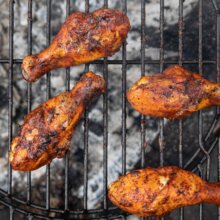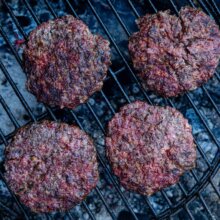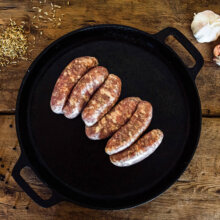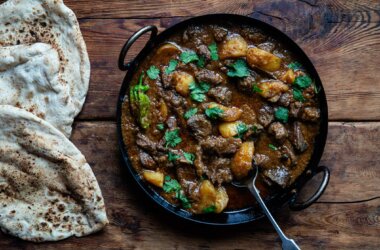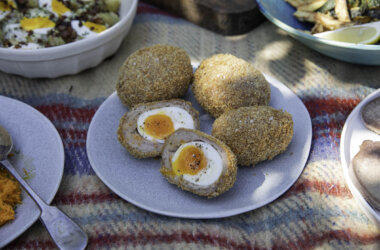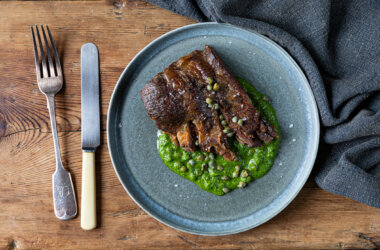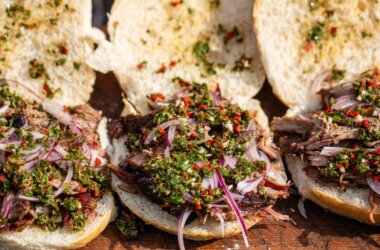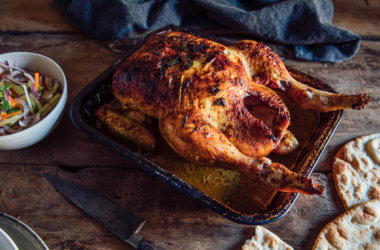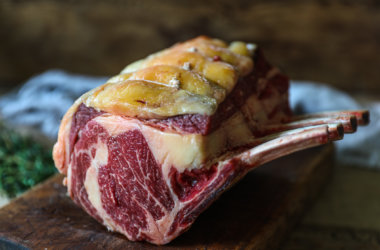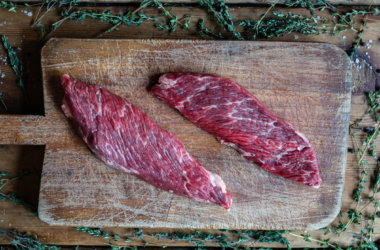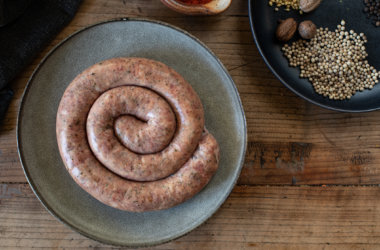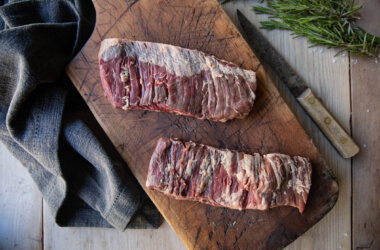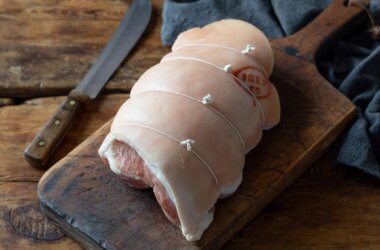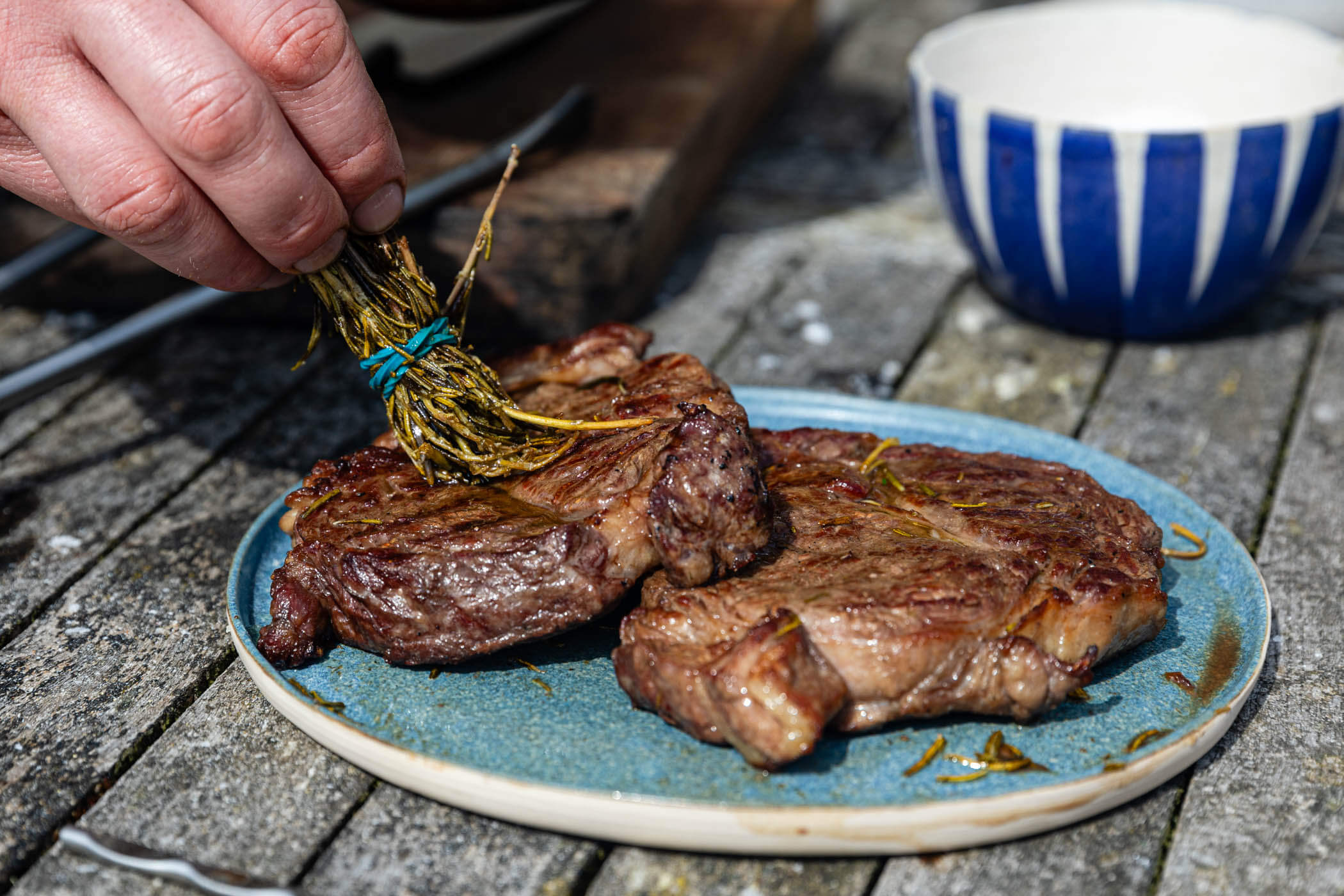
What Is a Ribeye Steak?
How to Cook Ribeye Steak: Ribeye steak is one of the most prized cuts of beef, taken from the rib section of the animal. It gets its name from the distinctive ‘eye’ of fat, which is visually apparent when prepared. Known for its rich marbling, this cut consists of two muscles: the spinalis dorsi, which is exceptionally juicy and flavourful, and the longissimus dorsi, which is tender and succulent.
Although ribeye steak has a higher fat content than leaner cuts like sirloin or fillet, the intramuscular fat (marbling) ensures it remains moist, tender, and full of deep, beefy flavour during cooking. The melting fat bastes the meat from within, resulting in a luxuriously juicy steak with an unrivalled umami taste – truly one of Yorkshire’s finest grass-fed prime steaks.
Unsurprisingly, ribeye is one of the most popular choices in steakhouses worldwide and a firm favourite among steak enthusiasts. Whether pan-seared, grilled over charcoal, or cooked using the reverse-sear method, ribeye steak delivers an unbeatable eating experience.
Ribeye Steak Cooking Time
Cooking times will vary depending on the thickness of your ribeye steak. Unlike leaner cuts such as sirloin, which can be served rare, ribeye steak benefits from being cooked to medium-rare. This allows the marbled fat to render down properly, enhancing the juiciness, tenderness, and rich beefy flavour.
For a medium-rare ribeye, we recommend pan-searing or grilling for approximately 6–8 minutes in total, flipping every 30–40 seconds to ensure even cooking and a perfectly caramelised crust (see Top Tips below for more details).
The Best Way to Cook a Ribeye Steak
- Take your ribeye steaks out of the refrigerator and remove them from the vacuum packaging.
- Pat the steaks dry with kitchen paper to remove any surface moisture and allow them to come up to room temperature – this ensures even cooking.
- Heat a griddle or heavy-based frying pan until it is smoking hot.
- Just before cooking, rub a little olive oil over both sides of the steaks and season generously with salt and pepper.
- Place the steaks in the pan and brown them on both sides for around 90 seconds per side. The steaks will naturally release from the pan when a crust has formed. If they stick, wait a few moments and try again – a rich, golden crust should have developed.
- Reduce the heat slightly and continue cooking for a total of 4–6 minutes, turning the steaks every 90 seconds. Baste frequently with the fat rendered during cooking to enhance flavour and juiciness.
- Remove the steaks from the pan and rest them in a warm place for at least 6 minutes.
- For added richness, place a knob of butter on top while resting – try a flavoured butter with garlic and tarragon to elevate the steak’s natural flavour. Watch it melt and mingle with the meat’s juices for an indulgent finish.
Enjoy your perfectly cooked ribeye steak!
Top Tips for Cooking Ribeye Steak
Master these ribeye steak tips, and you’ll cook a beautifully tender ribeye every time!
-
Use the Finger Test for Doneness: To gauge how done your steak is without a thermometer, try the finger test. Relax your hand and press the fleshy area just below your thumb — this feels like raw meat. Now touch your thumb to your index finger and press again — this is what a rare steak feels like, slightly soft and fleshy. As you move your thumb to the middle, ring, and pinky fingers, the texture becomes progressively firmer, mimicking the feel of medium-rare, medium, and well-done steaks respectively.
-
Let Your Steak Come to Room Temperature – Cooking cold meat straight from the fridge can lead to uneven cooking. Allow your ribeye steak to sit at room temperature for at least 30–60 minutes before cooking.
-
Get Your Pan or Grill Smoking Hot – A cast-iron pan or charcoal grill should be extremely hot before adding the steak. This ensures you achieve a deep, golden crust while keeping the inside juicy.
-
Season Just Before Cooking – Salt draws out moisture, so seasoning immediately before searing helps create a crispier crust while locking in juices.
-
Baste for Extra Flavour – Once seared, basting with butter, garlic, and fresh herbs enhances the richness and depth of flavour.
-
Use a Meat Thermometer for Precision – If you want perfect results every time, a meat thermometer is your best friend. For medium-rare ribeye, aim for an internal temperature of 53–55°C before resting.
-
Rest Before Serving – Let your steak rest for at least 6–8 minutes to allow the juices to redistribute, ensuring every bite is tender and full of flavour.
